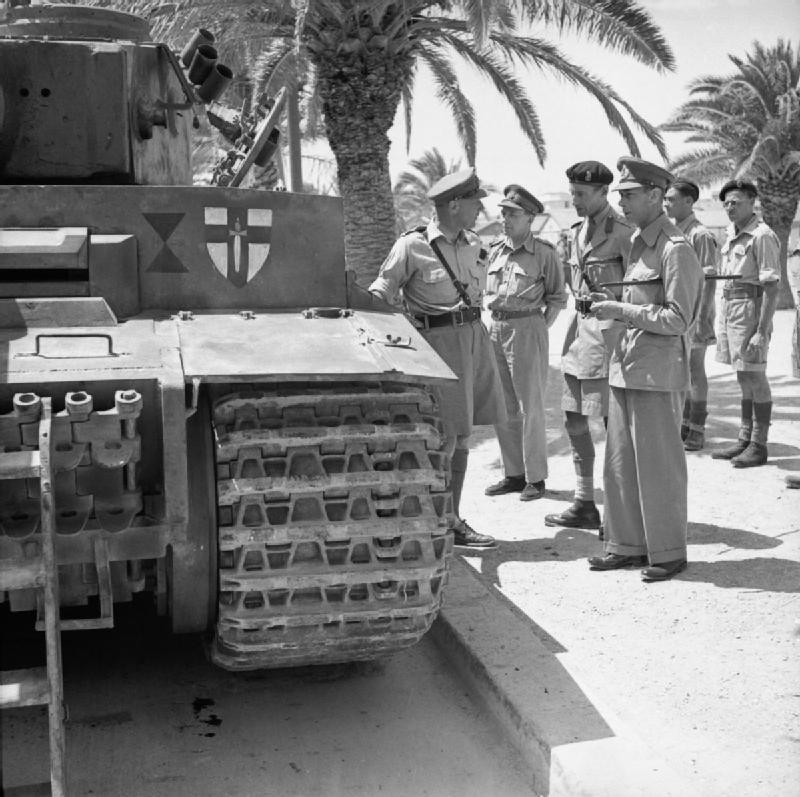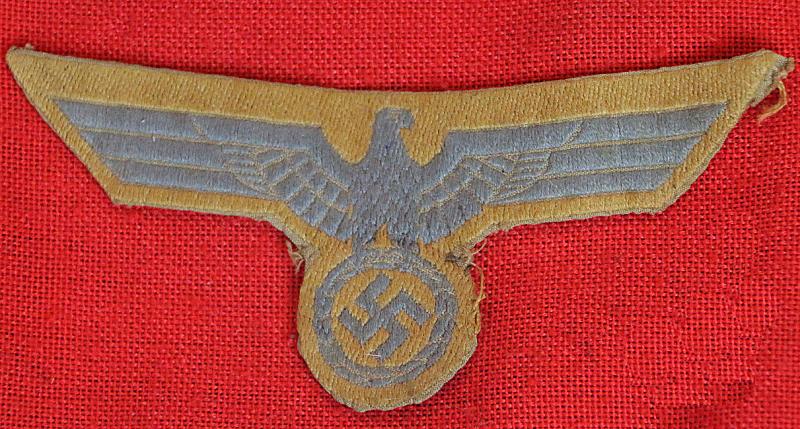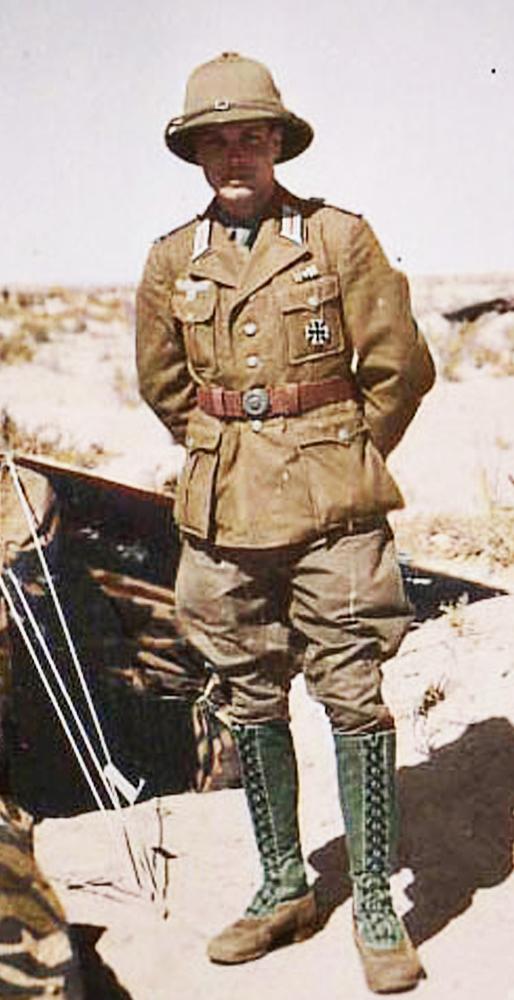A 1st Army Intelligence Corps HQ General Staff Officer Medal Group of the British Army 'Desert Rats', With His Slip On Eppaulettes and Cap Badge
Part of a very desirable collection of service items, of one veteran officer, from the 'Afrika Korps Vs Desert Rat' Campaign 1942-43, between Rommel and Montgomery
Acquired with a rare original Afrika Korps combatant's souvenir, of a tunic breast eagle, rare 1st pattern, in blue bevo weave cotton over tan, but sold separately.
From a former Desert Rat veteran Intelligence Corps of the 1st Army HQ. He was part of the General Staff at Montgomery's HQ tasked with defeating General Erwin Rommel's Afrika Korps.
The so called British 'Desert Rats', under Montgomery's command, kicked the DAK's bottoms at El Alamein, and then, with the 8th Army, were transferred to Italy in order to fight from the south right through to Rome.
When Rommel was promoted to the newly formed Panzerarmee Afrika, his command included a number of Italian units, including four infantry divisions. Two Italian armoured divisions, Ariete and Trieste initially remained under Italian control as the Italian XX Motorized Corps under the command of General Gastone Gambara.
The Afrika Korps was restructured and renamed in August 1941. "Afrikakorps" was the official name of the force for less than six months but the officers and men used it for the duration. The Afrika Korpswas the major German component of Panzerarmee Afrika, which was later renamed the Deutsch-Italienische Panzerarmee and finally renamed Heeresgruppe Afrika (Army Group Africa) during the 27 months of the Desert campaign.
On 26 November the Commander-in-Chief Middle East Command, General Sir Claude Auchinleck, replaced Cunningham with Major-General Neil Ritchie, following disagreements between Auchinleck and Cunningham. Despite achieving a number of tactical successes, Rommel was forced to concede Tobruk and was pushed back to El Agheila by the end of 1941. In February 1942 Rommel had regrouped his forces sufficiently to push the over-extended Eighth Army back to the Gazala line, just west of Tobruk. Both sides commenced a period of building their strength to launch new offensives but it was Rommel who took the initiative first, forcing the Eighth Army from the Gazala position.
Ritchie proved unable to halt Rommel and was replaced when Auchinleck himself took direct command of the army. The Panzer Army Afrika were eventually stopped by Auchinleck at the First Battle of El Alamein. Auchinleck, wishing to pause and regroup the Eighth Army, which had expended a lot of its strength in halting Rommel, came under intense political pressure from British Prime Minister Winston Churchill to strike back immediately. However, he proved unable to build on his success at Alamein and was replaced as Commander-in-Chief Middle-East in August 1942 by General Harold Alexander and as Eighth Army commander by Lieutenant-General William Gott. Gott was killed in an air crash on his way to take up his command and so Lieutenant-General Bernard Montgomery was appointed in his place. Alexander and Montgomery were able to resist the pressure from Churchill, building the Army's strength and adding a pursuit formation, X Corps, to the Army's XIII and XXX Corps.
Very good group. Italy Star, Africa Star 1935-45 Medal Defence Medal 1939-45 Star. 1st Army Bar. The British First Army was reformed during the Second World War. It was formed to command the American and British land forces which had landed as part of Operation Torch, the Allied invasion of French North Africa, in Morocco and Algeria on 8 November 1942. It was commanded by Lieutenant-General Sir Kenneth Anderson. The First Army headquarters was formally activated on 9 November 1942 when Anderson arrived in Algiers to assume command of the redesignated Eastern Task Force.
The First Army initially consisted of American and British formations only. After the surrender of French forces following the German abrogation of their armistice agreement with Vichy France, French units were also added to the First Army's order of battle. It eventually consisted of four corps, the US II Corps, the British V Corps, British IX Corps and French XIX Corps.
After the landings, Anderson's forces rushed east in a bid to capture Tunis and Bizerte before German forces could reach the two cities in large numbers. They failed. Following that lack of success, a period of consolidation was forced upon them. The logistics support for the First Army was greatly improved and bases for its accompanying aircraft greatly multiplied. By the time General Sir Bernard Montgomery's British Eighth Army approached the Tunisian border from the east, following its long pursuit of Generalfeldmarschall Erwin Rommel's forces after El Alamein, the First Army was again ready to strike.
Supported by elements of XII Tactical Air Command and No. 242 Group RAF, the First Army carried the main weight of General Sir Harold Alexander's 18th Army Group's offensive to conclude the Tunisian Campaign and finish Axis forces in North Africa off. The victory was won in May 1943 in a surrender that, in numbers captured at least, equalled Stalingrad. Shortly after the surrender, the First Army was disbanded, having served its purpose.
Code: 25173
320.00 GBP








